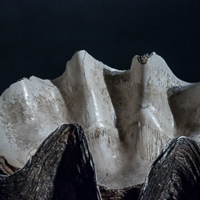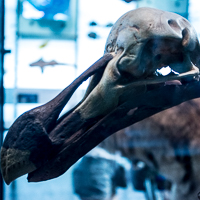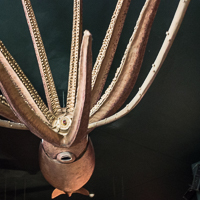
About the Collection
If the rest of this massive museum has yet to convince you of the tremendous diversity of plant and animal life on this planet, the Hall of Biodiverstiy will hammer the point home. Additions in the past two decades have moved away from the traditional diorama displays of taxidermied animals in a detailed recreation of their habitat and towards displays like you find here: a little bit of everything. It is not necessarily better, but a welcome change after the other halls. Every inch of the hall contains something--look to the walls, look to the floor and definitely look to the ceiling.

What You Will See
The hall contains the largest and most realistic diorama in the museum--so large you can actually walk through it. It is a recreation of an endangered Central African rainforest, dominating the center of the darkened hall. The recreation is so failthful it feels more like a corner of the Botanical Garden Conservatory than a basement installation. This is what to expect from future dioramas at the museum. Fronting the installation is a giant wall filled with specimens from land, sea and air--an impressive snapshot of the variety of creatures to be found on the planet (all the more impressive when you consider how many are missed). You could spend hours goint through the wall in detail.

Why You Should Go
The point of the hall is less about celebrating the variety of life on earth (which the rest of the museum does in spades), but rather to educate on the impending and real dangers of the loss of biodiversity. Take some time at the exhibit featuring endangered animals--haunted by the skeleton of the extinct Dodo bird. Many have been lost and many more are at risk. Imagine the wall with half the species extinct. Then circle to the education center to study up on the myriad threats to biodiversity on the planet. This hall, more than any other, is the call to action.




